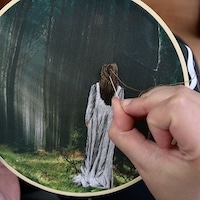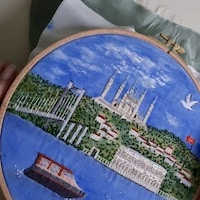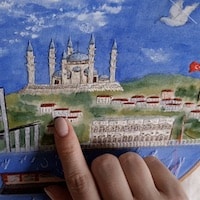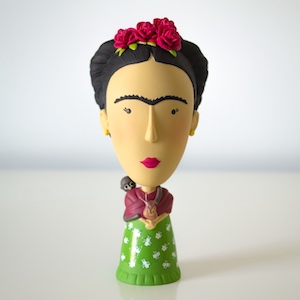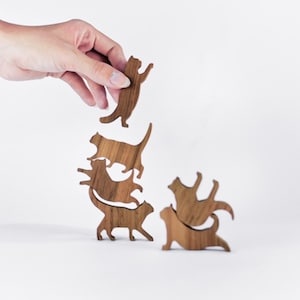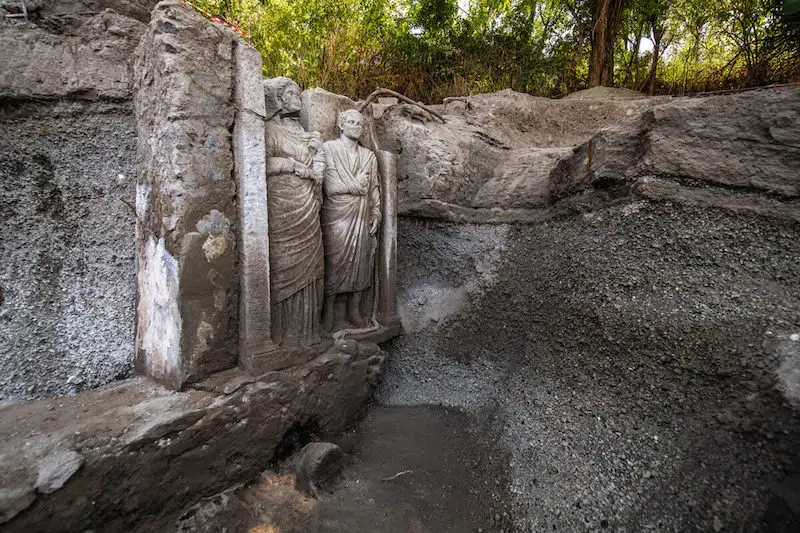
Photo: Alfio Giannotti, courtesy Pompeii Archaeological Park
On April 2, 2025, another remarkable discovery was made in Pompeii: a funerary relief depicting two almost life-sized figures of a man and woman. The relief was discovered in a necropolis near Porta Sarno, an area in which over 50 cremation burials have already been unearthed, as evidenced by stelae and a monumental funerary arch in the vicinity.
Archaeologists believe that the relief may honor a married couple; but, given that research is still ongoing and there’s no accompanying inscription, definitive conclusions can’t be drawn just yet. Gabriel Zuchtriegel, the director of Pompeii Archaeological Park, also cautions that such funerary sculptures don’t always represent couples, even if, at first, they may suggest otherwise.
“Sometimes you get two men, or sometimes they come in threes,” Zuchtriegel told The Guardian. “This could be her husband, but it could also be her son. There was no inscription, so we don’t know.”
Notably, the woman appears with carved accessories that, according to a statement, may indicate that she was a priestess of Ceres, a goddess associated with agriculture and fertility in ancient Roman mythology. While the man dons a simple toga wrapped over his left shoulder, the woman is shrouded in a veil, large cloak, and tunic, and sports amphora-shaped earrings, a wedding band, bracelets, and a necklace with a lunula pendant shaped like a crescent moon.
“The lunula was one of the amulets used to ward off evil forces, and was worn by women from birth until marriage,” the researchers write in a paper detailing the relief discovery. “The symbol of the crescent moon also had an atavistic and primordial meaning, linked to the fertility of the earth, abundance, and rebirth.”
In the woman’s right hand is a bough of laurel leaves, which was often used for purifying and blessing religious spaces by dispersing the smoke of incense or other aromatic herbs burned during religious ceremonies. In her left hand is what appears to be a papyrus roll.
“She really looks like a very important woman in the local elite,” Zuchtriegel adds. Being a priestess in Roman society marked a pronounced departure from a woman’s traditional relegation to the domestic and maternal sphere. “Priestesses had an important role in the public sphere,” the paper continues. “They had a position of power far removed from other women and very similar to male priests.”
In its potential edification of a priestess, the newly discovered relief offers critical insight into Pompeii’s religious structures and the ways women participated in them. It’s also distinct in its age: the quality of the sculpture’s carving and their archaic characteristics suggest it dates back to Rome’s Republican period, a rare find in southern Italy.
Beginning on April 16, the relief will be showcased in Being a Woman in Ancient Pompeii, an exhibition staged at Pompeii Archaeological Park. To learn more about this exceptional discovery, visit the Pompeii Archaeological Park website.
A nearly life-sized funerary relief was recently discovered in Pompeii, and may depict a priestess of Ceres, the Roman goddess of agriculture and fertility.
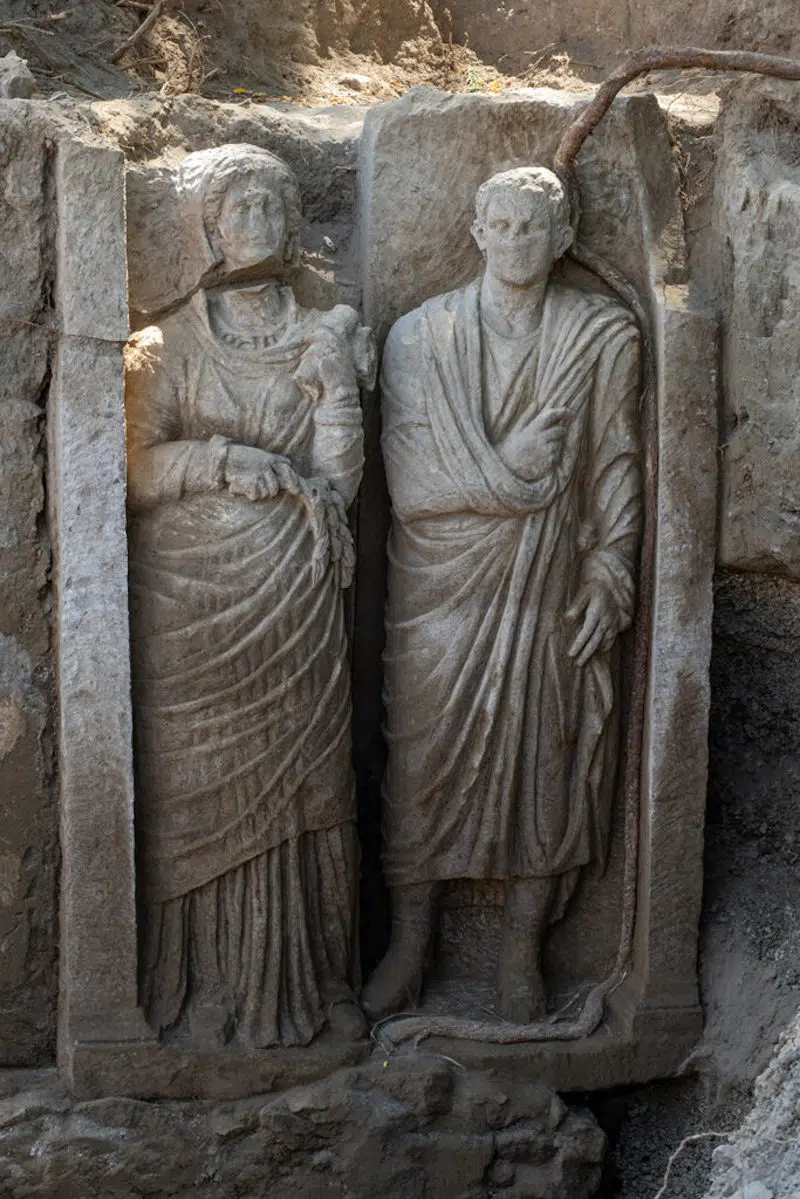
Photo: Alfio Giannotti, courtesy Pompeii Archaeological Park
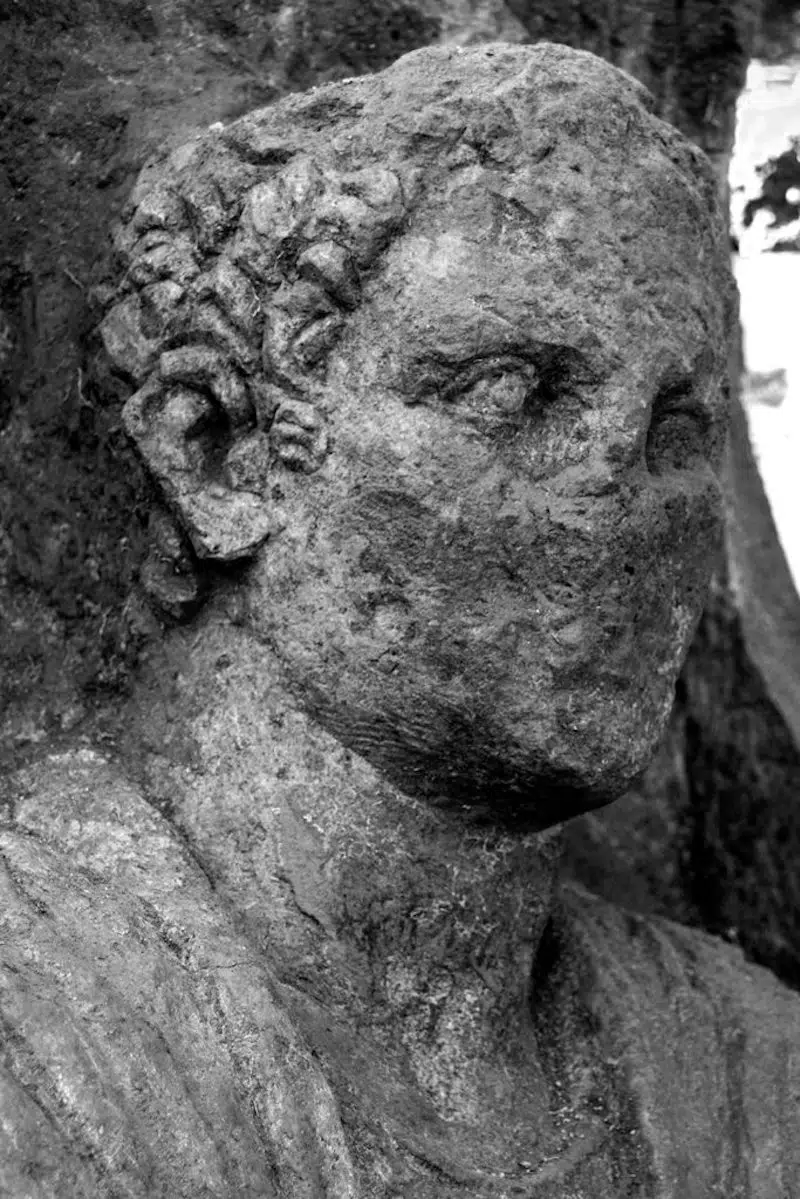
Close-up of the man depicted in the funerary relief. (Photo: Alfio Giannotti, courtesy Pompeii Archaeological Park)
The relief depicts a man and a woman, the latter of whom dons accessories with symbolism associated with Ceres, such as crescent moons.
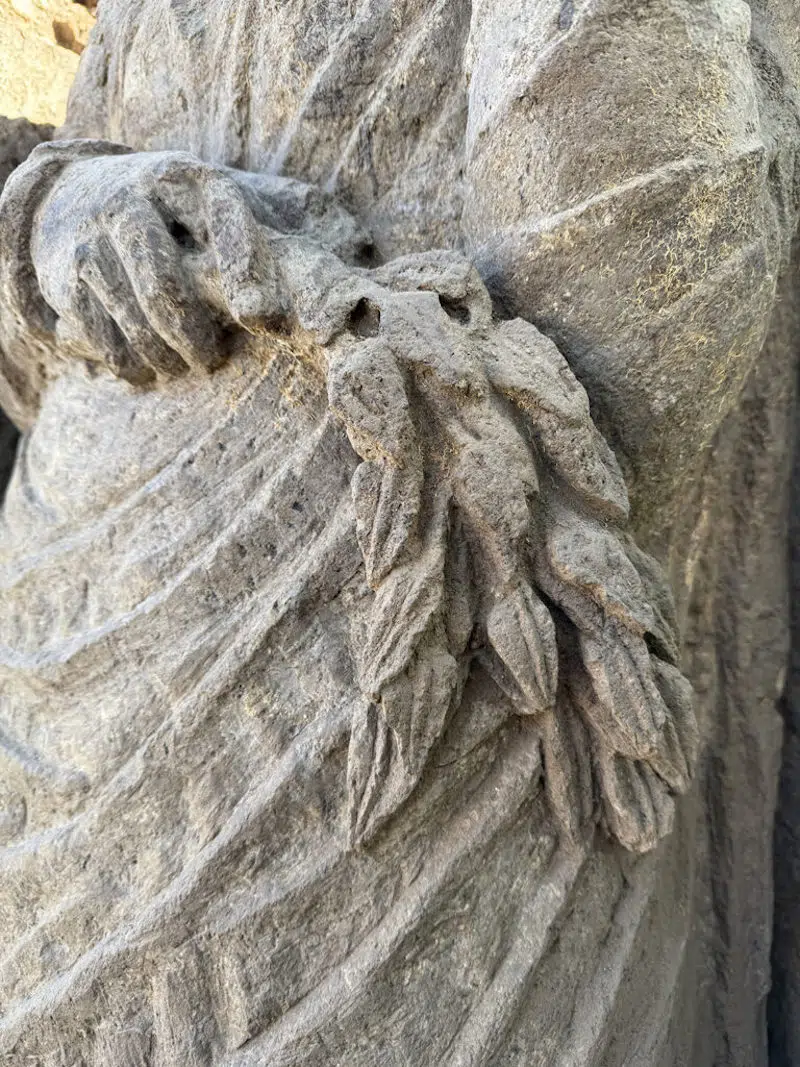
Laurel leaves in the right hand of the possible priestess. (Photo: Alfio Giannotti, courtesy Pompeii Archaeological Park)
The relief will be included in the upcoming Being a Woman in Ancient Pompeii exhibition, which opens on April 16, 2025.

Photo: Alfio Giannotti, courtesy Pompeii Archaeological Park
All photos via the Pompeii Archaeological Park press office.
Sources: A funerary relief from a monumental tomb in the necropolis of Porta Sarno; A Monumental Tomb with a relief of two spouses in the funerary area of Porta Sarno; Two near lifesize sculptures found during excavations of Pompeii tomb
Related Articles:
Pompeii Excavations Turn Up Prison Bakery Run by Enslaved Labor
New Well-Preserved Paintings Discovered at Pompeii Amid Ongoing Excavations
Archeologists Discover “Tiny Home” in Pompeii Filled With Well-Preserved Frescoes






























